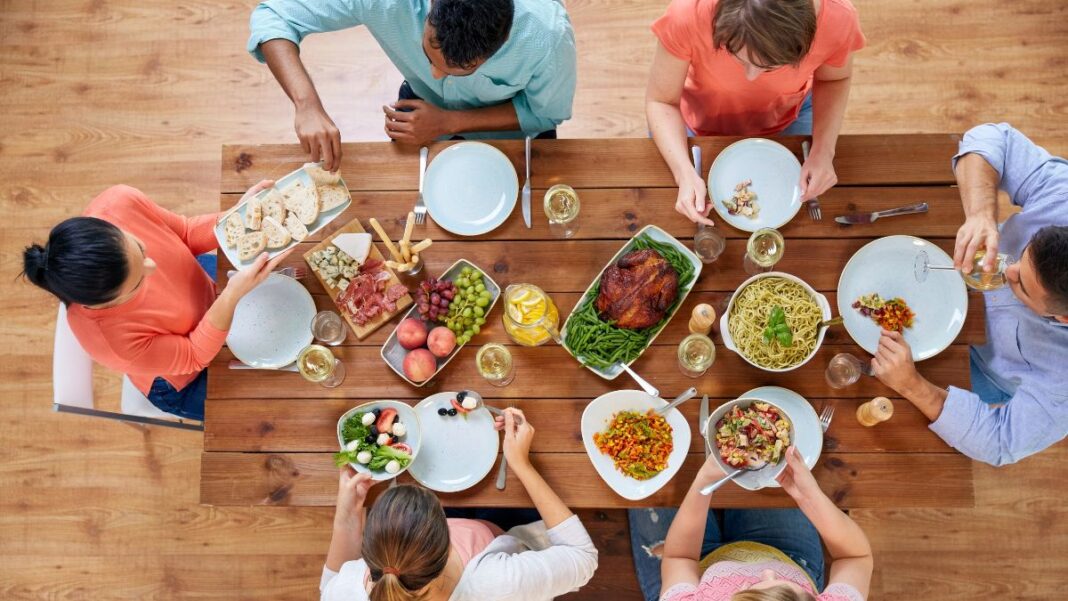If you’re a food lover, you’ve probably heard of Caribbean cuisine. The food of the Caribbean is a fusion of many different cultures and tastes, which makes it unique and flavorful. The cuisine is influenced by African, European, Amerindian, Latin American, Indian/South Asian, North American, Middle Eastern, and Chinese cultures.
Caribbean cuisine is also known for its use of herbs and spices, which add depth and complexity to the dishes. The most popular herbs and spices used in Caribbean cooking include garlic, cilantro, celery, onions, green onions, marjoram, thyme, and rosemary. Caribbean seasoning is a popular marinade made with oil and green herbs that can be found in a variety of dishes.
In this article, we’ll provide an overview of Caribbean cuisine, exploring the unique flavors and influences that make it so special. We’ll dive into the different types of dishes, ingredients, and cooking techniques used in Caribbean cooking. Whether you’re a seasoned foodie or just starting to explore new cuisines, this article will give you a taste of the vibrant and delicious world of Caribbean cuisine.
Historical Influences on Caribbean Cooking
Caribbean cuisine is a rich blend of various cultures and traditions that have been passed down from generation to generation. The unique flavors and influences in Caribbean cooking are a result of the fusion of indigenous, European, African, and Asian and Middle Eastern culinary traditions.
Indigenous Contributions
The indigenous people of the Caribbean, including the Arawak, Carib, and Taino, had a significant impact on the region’s cuisine. They introduced a wide variety of fruits, vegetables, and spices that are still used in Caribbean cooking today. These include cassava, sweet potatoes, yams, corn, peppers, and allspice.
European Colonial Impact
The European colonial powers that occupied the Caribbean islands also had a significant influence on the region’s cuisine. They introduced new ingredients such as sugar, coffee, citrus fruits, and various spices. European cooking techniques, such as baking and roasting, were also adopted by Caribbean cooks.
African Culinary Traditions
African slaves brought with them their own culinary traditions, which were then combined with the local cuisine and European ingredients to create new dishes. African cooking techniques such as stewing and braising were incorporated into Caribbean cooking. African ingredients such as okra and black-eyed peas were also used to create dishes like jerk chicken and callaloo.
Asian and Middle Eastern Infusions
Asian and Middle Eastern immigrants to the Caribbean also had an impact on the region’s cuisine. Chinese immigrants introduced stir-fry techniques and ingredients like soy sauce and ginger. Lebanese immigrants brought falafel and other Middle Eastern dishes to the region.
In summary, Caribbean cuisine is a unique blend of various culinary traditions from around the world. The use of indigenous ingredients, European cooking techniques, African culinary traditions, and Asian and Middle Eastern infusions have created a rich and diverse cuisine that is enjoyed by people all over the world.
Key Elements of Caribbean Flavor
Staple Ingredients
Caribbean cuisine is characterized by the use of staple ingredients such as rice, beans, plantains, yucca, and sweet potatoes. These ingredients are used in a variety of dishes and are often combined with meats, seafood, and vegetables to create flavorful and filling meals. Rice, in particular, is a staple across the Caribbean, and each area has its specialty rice dish. Seasoned rice is served with papaya, coconut, or eggs on different islands.
Signature Spices and Herbs
The flavors that characterize Caribbean cuisine come from a mix of cultures such as Africa, Asia, India, and Europe. The cuisine is heavily spiced, and signature spices and herbs include allspice, nutmeg, thyme, rosemary, and cilantro. Allspice is used in a variety of Caribbean dishes, including jerk chicken, curries, and stews. Nutmeg is another popular spice in Caribbean cuisine, and it is used in sweet and savory dishes alike. Cilantro is used in many dishes as a garnish or to add a fresh, herbaceous flavor.
Traditional Cooking Techniques
Caribbean cuisine features a variety of traditional cooking techniques, including grilling, smoking, and stewing. One of the most well-known techniques is jerk cooking, which involves marinating meat in a spicy blend of herbs and spices before grilling or smoking it. Another popular technique is stewing, which involves simmering ingredients in a flavorful broth until they are tender and infused with flavor. Many Caribbean dishes also feature a combination of sweet and savory flavors, such as sweet plantains served alongside savory meats or seafood.
Frequently Asked Questions
What are the historical origins of Caribbean cuisine?
Caribbean cuisine has its roots in the indigenous cultures of the Caribbean islands, including the Arawaks, Caribs, Aztecs, Incas, and Maya. The arrival of European colonizers and African slaves brought new ingredients and cooking techniques to the region, resulting in a unique fusion of flavors and cultures.
Which cultural influences have shaped Caribbean cooking?
Caribbean cuisine is a melting pot of many cultures, including African, Creole, Cajun, Amerindian, European, Latin American, East/North Indian, Middle Eastern, and Chinese cuisine. Each culture has contributed to the diverse range of flavors and ingredients found in Caribbean dishes.
What are some staple ingredients in Caribbean dishes?
Staple ingredients in Caribbean cuisine include rice, beans, plantains, cassava, yams, and various types of seafood. Spices such as allspice, thyme, and scotch bonnet peppers are also commonly used to give dishes their signature flavor.
How does Caribbean food reflect the region’s diverse culture?
Caribbean food reflects the region’s diverse culture by incorporating a wide range of ingredients and flavors from different cultures. The use of indigenous ingredients and cooking techniques, combined with the influence of European and African cuisines, has resulted in a unique culinary tradition that is distinctly Caribbean.
Can you list typical dishes found on a Caribbean cuisine menu?
Some typical dishes found on a Caribbean cuisine menu include jerk chicken, rice and peas, curry goat, ackee and saltfish, callaloo, and fried plantains. These dishes are often served with a side of breadfruit, yams, or cassava.
What distinguishes Jamaican cuisine within the broader scope of Caribbean food?
Jamaican cuisine is known for its bold, spicy flavors and the use of jerk seasoning, which is a blend of spices that includes allspice, thyme, and scotch bonnet peppers. Jamaican cuisine also features a variety of seafood dishes, including escovitch fish and steamed fish with okra.

